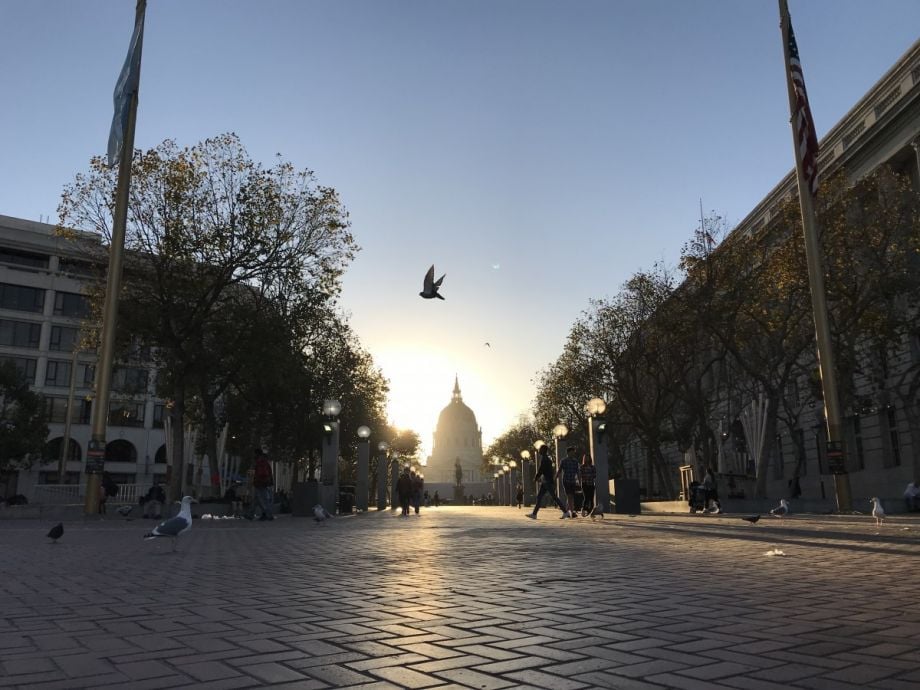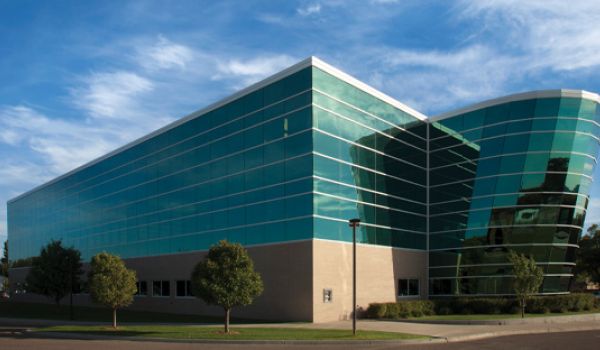A bill to set in motion massive structural economic change could easily be hundreds, maybe thousands of pages long. AB 857 — which creates a legal pathway in California for public banks owned by city and county governments, where cities and counties would deposit public dollars — clocks in at a mere 29 pages.
“What we wanted to do was create a very lightweight bill that grafts public banks onto the existing state banking law rather than create a standalone financial code section that only covers public banks,” says Sushil Jacob, who played a lead role in drafting the bill as the legislative committee co-chair for the California Public Banking Alliance, a coalition of grassroots groups hailing from ten cities across the state.
Keeping the bill relatively short and sweet was essential, Jacob says, to crafting something that legislators and legislative staff and lawyers and consultants could digest, deliberate over, and ultimately pass in the same year it was introduced.
Of course it was also crucial that, since the bill’s introduction in February, the alliance rallied support for AB 857 from over 180 organizations across the state, including 17 city and county governments. The governor has until October 13 to sign it into law.
“Part of why our message resonated with so many across the state, from elected officials to ordinary folks, was because everyone understands intuitively that Wall Street is extractive, is predatory,” says Trinity Tran, lead organizer for the California Public Banking Alliance. “Why are we using our tax dollars to harm communities when we could use it to help our communities?”
Today in the U.S., state and local governments hold $502 billion in bank deposits (not to mention $4.3 trillion in state and local public pensions). Progress on public banks in California will be closely watched in other states and cities where organizers and public officials have been pushing for public banks — including Washington State, New Mexico, Michigan, New Jersey, the District of Columbia, New York City, Philadelphia, Chicago, the Twin Cities, Portland, Seattle, and elsewhere.
Inspired by the state-owned Bank of North Dakota (until recently the only public bank operating in the U.S.), proponents of AB 857 envision a statewide network of public banks that would leverage local public deposits in support of public policy priorities like affordable housing and homeownership, clean energy and climate adaptation, small business lending, alternatives to payday loans, and other priorities that public banking advocates feel are too important to leave entirely up to privately owned banks.
“It sounds very aspirational but if it’s doable we should explore it,” says Long Beach Mayor Robert Garcia. “Now that it’s passed, I’m going to work to propose a public bank in Long Beach and I’m hopeful that the council and the team will be supportive of the idea.”
For many of its supporters, AB 857 builds on previous victories to divest public deposits from Wells Fargo, in large part out of protests against the Dakota Access Pipeline, which the bank helped finance. Others have been pushing public banks since the aftermath of the 2008-2009 financial crisis for which they blame “Wall Street” banks. While divestment campaigns created some common ground and connections between grassroots organizers in different cities across the state, any victories were tempered by the fact that divesting municipal deposits from one big bank only meant depositing those funds in another big bank.
“We knew we had to fight for an alternative, to create real divestment, for Los Angeles to divest from Wall Street and create its own socially and environmentally responsible bank,” says Tran, who also co-founded Revolution LA, which spearheaded the Wells Fargo divestment campaign in Los Angeles.
The sentiment goes back even further. As told by author and law professor Mehrsa Baradaran in “How the Other Half Banks: Exclusion, Exploitation, and the Threat to Democracy,” popular movements and leaders throughout U.S. history have pushed to get more from banks in return for the privilege of holding deposits, and banks have subsequently pushed back. It was during the era of Woodrow Wilson, Teddy Roosevelt and other pre-New Deal era progressives in the anti-trust movement when North Dakotans banded together exactly one hundred years ago this year to take back power over their state government deposits.
“Banking is a money creation machine, it’s a power, and typically in the U.S. we’ve given that power to banks in exchange for achieving public policy goals but if they’re not going to do it, why not keep some of that power,” Baradaran tells Next City. “We wouldn’t need public banks if banks were doing their jobs.”
For good reason, many remain skeptical that government-owned financial institutions will do anything other than enable corruption and self-dealing to the benefit of career politicians, potentially leaving taxpayers to foot the bill for failing public banks. Looking into a potential state-owned bank to serve the growing cannabis industry, the California State Treasurer’s office commissioned a 2018 study noting 29 public banks were chartered and operated between 1917 and 2017 — and most have ceased to exist either by regulatory order, financial failure, or the state or municipality closing the public bank, with the exceptions being the Bank of North Dakota and the recently approved American Samoa Bank.
The California Bankers Association, which opposed AB 857, commissioned a poll released in May that found 60 percent of respondents were opposed to government-owned banks, and 70 percent were concerned over a lack of accountability — although the association says its poll reached just 600 people “likely to cast a ballot in the 2020 election” in a state of 39.5 million residents.
AB 857’s supporters agree that accountability and corruption are valid concerns when it comes to public banks. The bill they helped craft puts the ultimate power to decide if public banks are sufficiently safe and reliable into the hands of the professionals — the state’s banking regulatory agency, known as the Department of Business Oversight.
Since AB 857 grafts public banks onto the state’s existing banking law, each public bank charter application will be subject to the same standards as any private bank charter application. In addition, in order to obtain a public bank charter from the Department of Business Oversight, cities and counties must draft and submit a viability study that includes an explanation of how they will fund the startup costs for a proposed public bank, a business plan for their proposed public bank including how long it will take to become financially self-sustaining, and — most importantly — a proposed governance structure that will protect a public bank from insider transactions and conflicts of interest. The Federal Deposit Insurance Corporation must also agree to provide deposit insurance for the proposed public bank before the department finally issues a public bank charter.
“You’re creating an independent financial institution that’s separate from the city, that is not managed by city bureaucrats,” says Jacob, who also works as senior staff attorney for economic justice at the Lawyers’ Committee for Civil Rights of the San Francisco Bay Area. “Ultimately it’s not doing charitable work, it’s doing real community economic development work managed by professional bankers.”
AB 857 also limits the Department of Business Oversight to approve only two public bank charters a year over seven years, up to a maximum of just ten public banks — for now.
“We’ll reexamine it in seven years, and hopefully by that time it will be a different political climate, different legislature, and hopefully we’ll have some successful banks,” Tran says.
Advocates expect public banks will look different for cities, counties or combinations of government bodies in different parts of the state, based on what organizers and local officials prioritize for each city, county or region. “We didn’t want to create a one-framework-fits-all bill,” Tran says. “It would be more authentic to the spirit of California to let localities and local governments create their own structures.”
A few California cities have recently published feasibility studies of public banks, including San Francisco and its neighbors to the east across the Bay. Conducted before AB 857 was finalized and passed, these feasibility studies don’t cover everything required to submit to the Department of Business Oversight, but they do put these potential public banks slightly ahead of others.
“Now with legislation in place I think more cities can move forward to study it, and I think we will,” says Mayor Garcia. “What I like about the legislation is that it allows multiple cities to go out and do these studies, so instead of having one approach, we can now have multiple municipalities or agencies go out to do our own studies to see what can work and what can’t work.”
Some requirements under AB 857 will apply to all public banks in California regardless of what they look like — especially the requirement to avoid competition with private institutions for retail banking services. Instead, modeled after the Bank of North Dakota, AB 857 requires California public banks to partner with local financial institutions to provide retail and potentially other public-facing services.
The Bank of North Dakota doesn’t have any branches, nor offer ATM access or debit cards. Its deposits come almost entirely from the state government and local government bodies in North Dakota. Other than student loans, it primarily makes loans in partnership with local banks and credit unions across the state — small businesses and farmers in North Dakota who request loans from their local financial institution may not even realize the state-owned bank has helped provide some of the funds they borrow. While the Bank of North Dakota does make home loans, it primarily does so for clients referred from a local financial institution because that institution could not for some reason make that loan.
As Next City reported last year, it’s largely because of the Bank of North Dakota’s local partnership model that North Dakota has more banks and credit unions per capita than any other state. At the same time, the Bank of North Dakota has earned a profit every year since 1971, and over the past few decades the bank has typically paid between $30 to $50 million a year back into the state’s general budget — something that could be a huge boost to chronically underfunded city governments.
In a new wrinkle on public banking, AB 857 also explicitly includes federally certified community development financial institutions (CDFIs) in its definition of “local financial institution,” meaning that public banks can partner with groups like the Mission Economic Development Agency, Pacific Community Ventures or other CDFIs that are already making small business loans or payday alternative loans focused on immigrants, people of color and other historically marginalized groups.
“Now they can ramp up that work, with access to a whole new pot of partnership loans and capital,” Jacob says. ”Having a CDFI in the community that has the track record and accountability and community-connectedness of a group like the Mission Economic Development Agency is really critical to a public bank’s success.”
Like all banks, public banks will have to reach and maintain financial sustainability in order to remain in operation, especially through a downturn or a natural disaster. A failing public bank could result in FDIC doing what it usually does for failed banks — liquidating them, selling the deposits and assets to a viable institution that would very likely be a Wall Street bank.
“You may have some product lines that you subsidize in order to lower the cost, to increase access to credit for low-wealth communities, businesses or individuals, but you’re going to have to make it up somewhere if you’re going to survive economic cycles,” says Kat Taylor, co-founder and CEO of Oakland-based Beneficial State Bank, which supports the creation of public banks. “It’s a real balancing act, and a really worthwhile one to do, but you don’t get to do any of the mission if the bank doesn’t survive.”
EDITOR’S NOTE: We’ve clarified Beneficial State Bank’s stance on public banking. While the bank supports public banks in general, it was its parent foundation that actually endorsed AB 857.
This article is part of The Bottom Line, a series exploring scalable solutions for problems related to affordability, inclusive economic growth and access to capital. Click here to subscribe to our Bottom Line newsletter.

Oscar is Next City's senior economic justice correspondent. He previously served as Next City’s editor from 2018-2019, and was a Next City Equitable Cities Fellow from 2015-2016. Since 2011, Oscar has covered community development finance, community banking, impact investing, economic development, housing and more for media outlets such as Shelterforce, B Magazine, Impact Alpha and Fast Company.
Follow Oscar .(JavaScript must be enabled to view this email address)

















